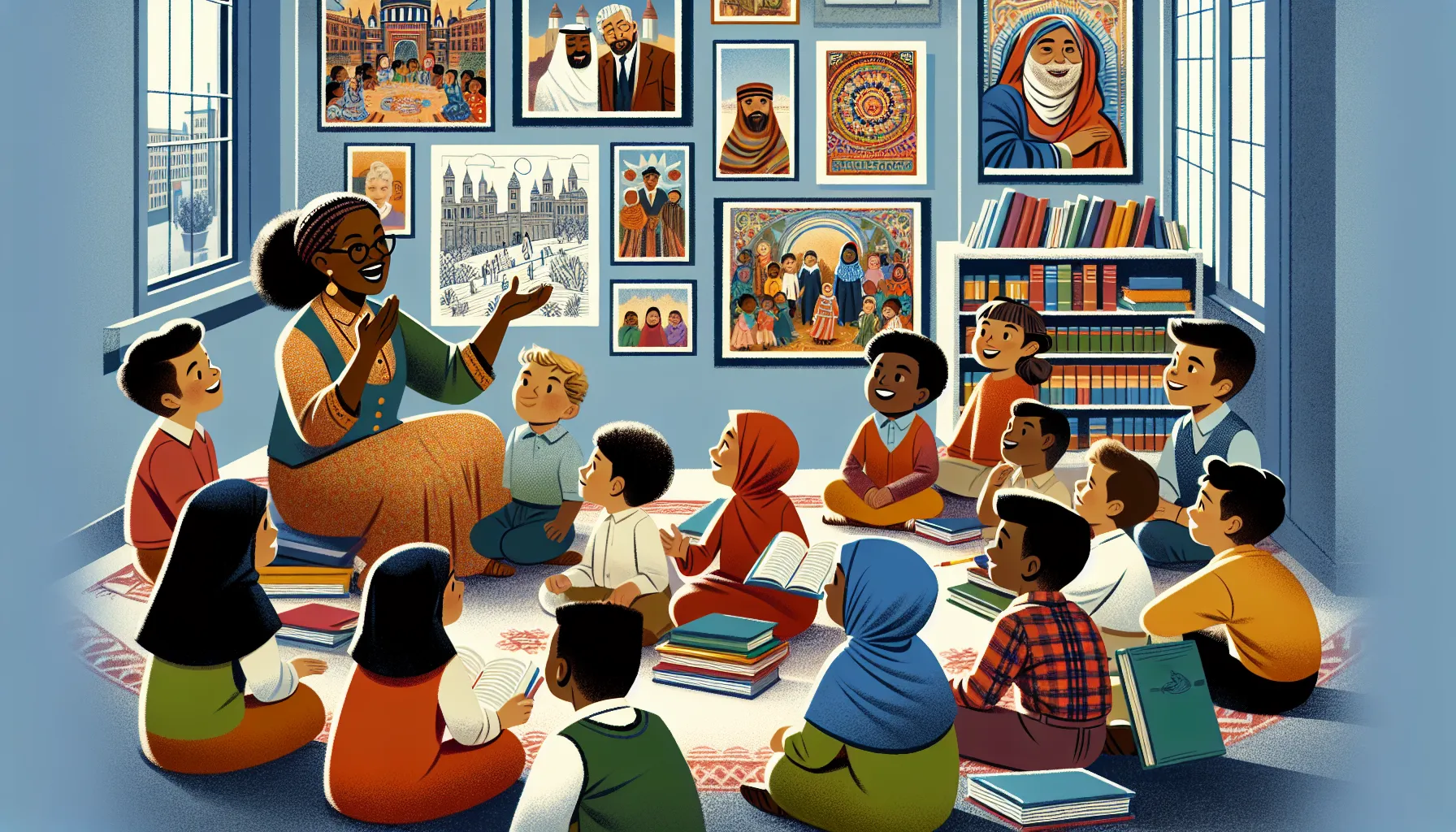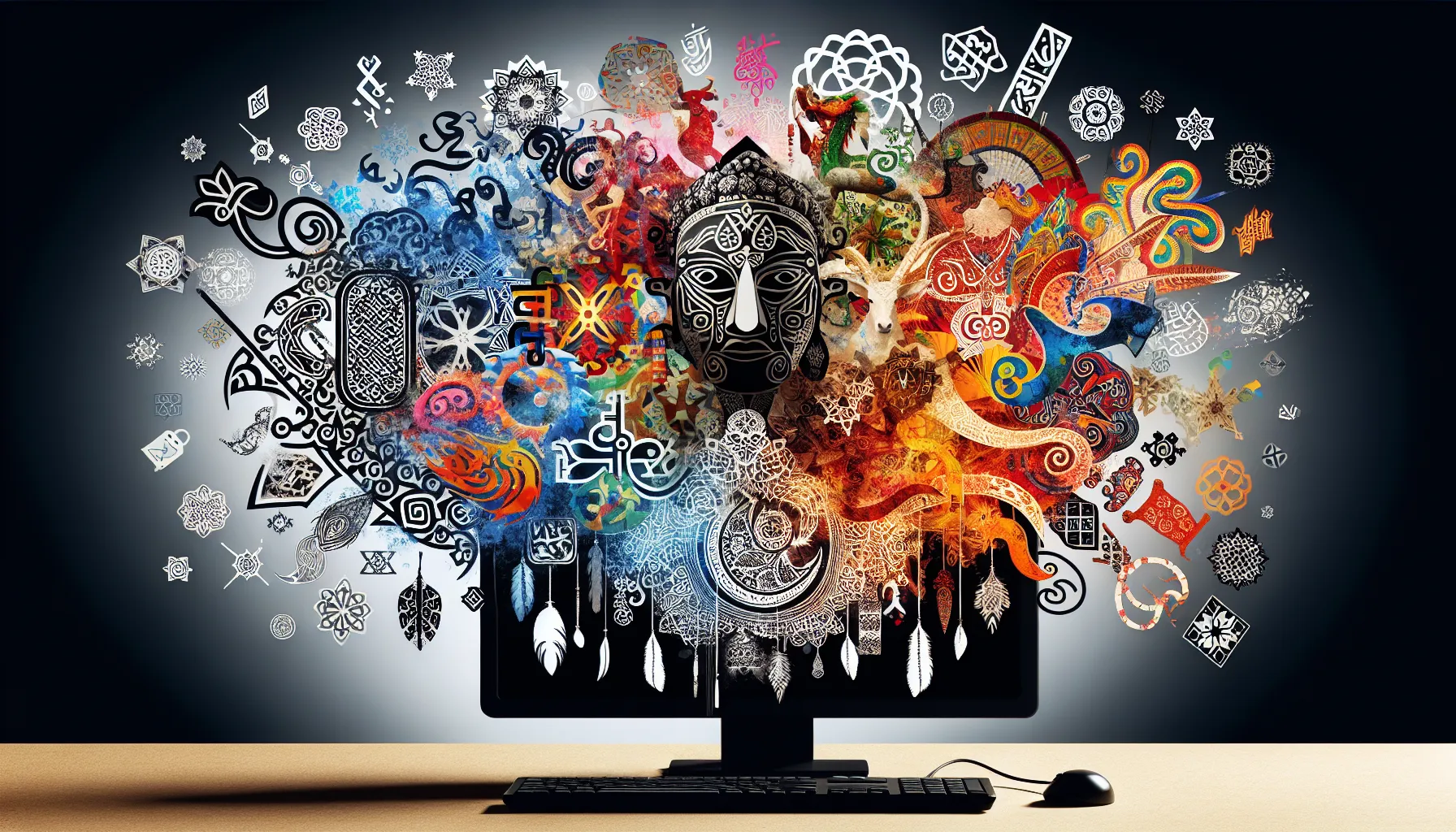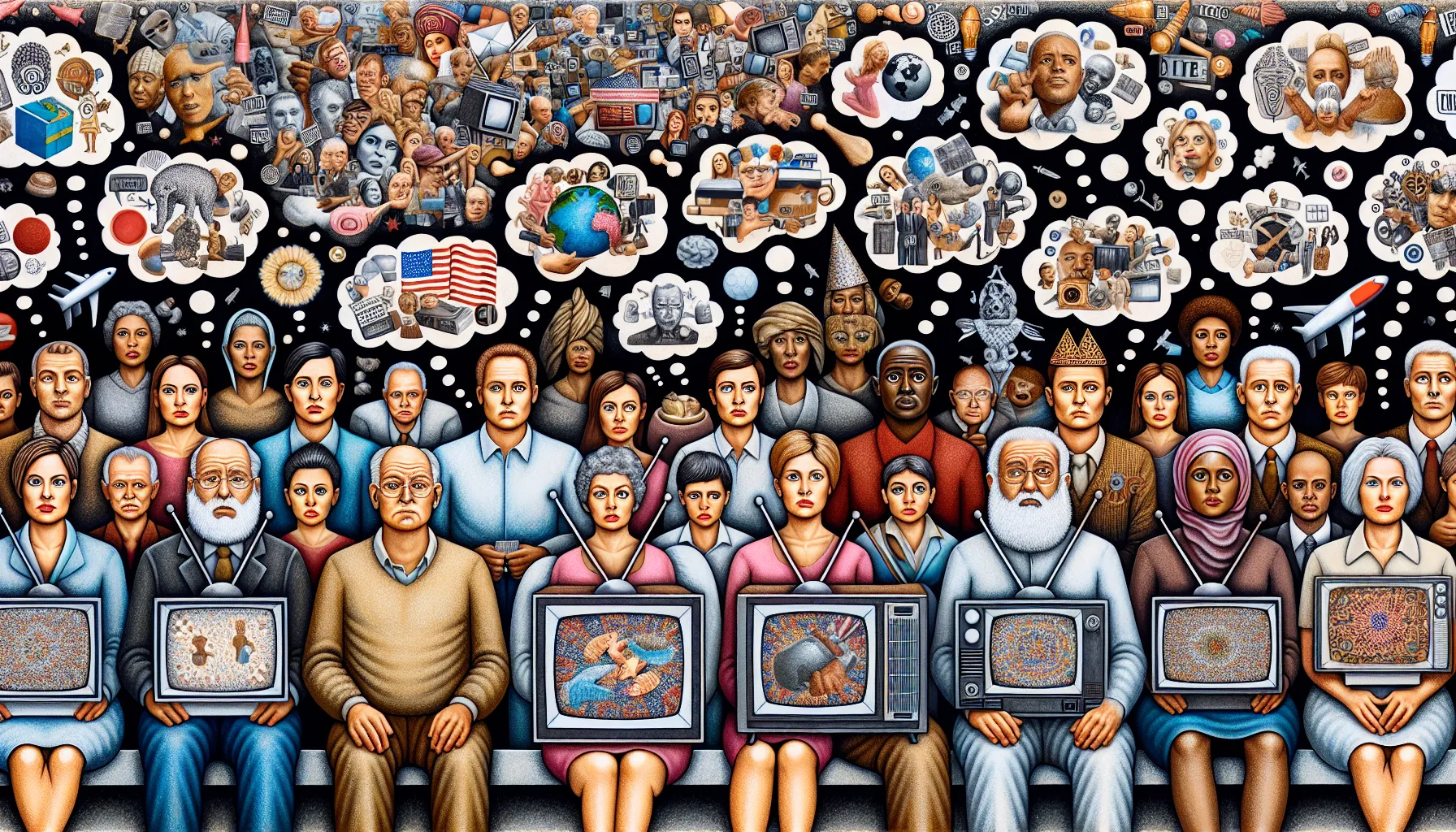Welcome to our IELTS Reading practice session focusing on “The Role of Folklore in Modern Education.” This comprehensive guide will help you prepare for the IELTS Reading test by providing a full-length practice test with three passages of increasing difficulty, along with various question types and answer keys. Let’s dive into this fascinating topic and sharpen your reading skills!
Nội dung bài viết
- Introduction to the Topic
- IELTS Reading Practice Test
- Passage 1 (Easy Text)
- The Enduring Value of Folklore in Education
- Questions 1-5
- Questions 6-10
- Passage 2 (Medium Text)
- Folklore as a Catalyst for Cultural Preservation and Innovation
- Questions 11-14
- Questions 15-20
- Passage 3 (Hard Text)
- The Synergy of Folklore and Pedagogy: Reimagining Educational Paradigms
- Questions 21-26
- Questions 27-30
- Questions 31-35
- Answer Key and Explanations
- Passage 1
- Passage 2
- Passage 3
- Conclusion
Introduction to the Topic
Folklore plays a significant role in modern education, bridging the gap between traditional wisdom and contemporary learning methods. This practice test will explore various aspects of how folklore is integrated into educational systems worldwide, its impact on cultural preservation, and its relevance in today’s globalized society.
IELTS Reading Practice Test
Passage 1 (Easy Text)
The Enduring Value of Folklore in Education
Folklore, comprising stories, myths, legends, and traditions passed down through generations, has long been an integral part of human culture. In recent years, educators have increasingly recognized the potential of folklore as a powerful tool in modern classrooms. By incorporating folkloric elements into their curricula, teachers can enhance students’ learning experiences and foster a deeper understanding of cultural heritage.
One of the primary benefits of using folklore in education is its ability to engage students on multiple levels. Traditional stories often contain universal themes and moral lessons that resonate across cultures and age groups. For example, fables like “The Tortoise and the Hare” teach valuable lessons about perseverance and humility, while creation myths from various cultures can spark discussions about different worldviews and belief systems.
Moreover, folklore can serve as a bridge between generations, helping students connect with their cultural roots and appreciate the wisdom of their ancestors. In an era of rapid technological advancement and globalization, maintaining these connections is crucial for preserving cultural identity and fostering a sense of belonging among young learners.
 Folklore in Education
Folklore in Education
Educators have found innovative ways to integrate folklore into various subjects. In language arts classes, students can analyze the narrative structures and linguistic features of folktales, improving their reading comprehension and writing skills. History lessons can be enriched by examining how folklore reflects the social, economic, and political conditions of different time periods. Even science classes can benefit from exploring the scientific principles behind traditional practices and beliefs.
The use of folklore in education also promotes critical thinking and cultural awareness. By comparing and contrasting folktales from different regions, students develop a more nuanced understanding of cultural similarities and differences. This approach fosters empathy, tolerance, and a global perspective – essential qualities in today’s interconnected world.
As we continue to navigate the challenges of modern education, the role of folklore remains relevant and valuable. By harnessing the power of these timeless stories and traditions, educators can create more engaging, meaningful, and culturally rich learning experiences for students of all ages.
Questions 1-5
Do the following statements agree with the information given in the passage? Write
TRUE if the statement agrees with the information
FALSE if the statement contradicts the information
NOT GIVEN if there is no information on this
- Folklore is only useful for teaching young children.
- Traditional stories often contain themes that are relevant across different cultures.
- Incorporating folklore into education can help preserve cultural identity.
- Folklore can only be used in language arts and history classes.
- Comparing folktales from different cultures can improve students’ critical thinking skills.
Questions 6-10
Complete the sentences below. Choose NO MORE THAN TWO WORDS from the passage for each answer.
- Folklore includes stories, myths, legends, and ____ passed down through generations.
- Fables like “The Tortoise and the Hare” teach lessons about ____ and humility.
- In language arts classes, students can analyze the ____ and linguistic features of folktales.
- Folklore can reflect the social, economic, and ____ conditions of different time periods.
- Using folklore in education promotes critical thinking and ____.
Passage 2 (Medium Text)
Folklore as a Catalyst for Cultural Preservation and Innovation
The integration of folklore into modern educational frameworks has emerged as a potent mechanism for cultural preservation and a springboard for innovation. As societies grapple with the rapid pace of globalization and technological advancement, the role of traditional narratives and practices in shaping educational experiences has gained renewed significance. This resurgence of interest in folklore within academic settings presents both opportunities and challenges for educators and policymakers alike.
One of the most compelling arguments for the incorporation of folklore in contemporary education is its capacity to foster a sense of cultural continuity. In an era where global homogenization threatens to erode local identities, folklore serves as a repository of collective memory and shared values. By exposing students to the rich tapestry of their cultural heritage through folktales, legends, and traditional practices, educators can instill a deep-seated appreciation for diversity and nurture a strong sense of belonging.
However, the integration of folklore into modern curricula is not without its complexities. Educators must navigate the delicate balance between preserving traditional knowledge and adapting it to contemporary contexts. This necessitates a critical approach to folklore, encouraging students to analyze these narratives through various lenses – historical, sociological, and psychological. Such an approach not only enhances critical thinking skills but also promotes a nuanced understanding of how cultural narratives evolve over time.
The interdisciplinary potential of folklore in education is particularly noteworthy. Far from being confined to literature or social studies, folkloric elements can enrich a wide array of subjects. In science education, for instance, traditional ecological knowledge embedded in folklore can complement modern environmental studies, offering insights into sustainable practices that have stood the test of time. Similarly, in mathematics, the geometric patterns found in traditional art and architecture can serve as engaging entry points for exploring complex mathematical concepts.
Moreover, the digital age has opened up new avenues for the dissemination and interpretation of folklore. Interactive digital platforms and multimedia presentations can breathe new life into age-old stories, making them more accessible and appealing to tech-savvy students. This synergy between traditional content and modern technology not only enhances engagement but also equips students with the skills to navigate and contribute to the digital landscape while remaining grounded in their cultural roots.
The incorporation of folklore in education also plays a crucial role in promoting intercultural understanding. By exposing students to diverse folkloric traditions, educators can foster empathy and challenge stereotypes. This global perspective is invaluable in preparing students for the realities of an increasingly interconnected world, where cross-cultural competence is a key asset.
However, it is essential to acknowledge the potential pitfalls of using folklore in educational settings. There is a risk of oversimplification or romanticization of cultural narratives, which can lead to the perpetuation of stereotypes rather than their deconstruction. Educators must be vigilant in presenting folklore in its proper historical and cultural context, encouraging critical analysis rather than passive acceptance.
In conclusion, the role of folklore in modern education extends far beyond mere storytelling. It serves as a powerful tool for cultural preservation, a catalyst for innovative teaching methods, and a bridge between tradition and modernity. By thoughtfully integrating folkloric elements into diverse subject areas, educators can create rich, multifaceted learning experiences that prepare students for the complexities of the contemporary world while fostering a deep appreciation for their cultural heritage.
Questions 11-14
Choose the correct letter, A, B, C, or D.
-
According to the passage, one of the main benefits of incorporating folklore in modern education is:
A) To simplify complex subjects
B) To promote cultural homogenization
C) To foster a sense of cultural continuity
D) To replace traditional teaching methods -
The author suggests that the integration of folklore into curricula:
A) Is straightforward and easy to implement
B) Should focus solely on preserving traditional knowledge
C) Requires a balance between preservation and adaptation
D) Is only relevant in literature and social studies -
The use of folklore in science education is mentioned as an example of:
A) The interdisciplinary potential of folklore
B) The limitations of traditional knowledge
C) The superiority of modern scientific methods
D) The need to completely overhaul science curricula -
The passage indicates that digital technology in folklore education:
A) Should replace traditional storytelling methods
B) Is not compatible with folkloric content
C) Can make folklore more accessible to modern students
D) Is only useful for younger students
Questions 15-20
Complete the summary below. Choose NO MORE THAN TWO WORDS from the passage for each answer.
Incorporating folklore into modern education offers numerous benefits, including preserving cultural identity and promoting innovation. It requires a (15) ____ approach to analyze narratives from various perspectives. Folklore has (16) ____ potential, enriching subjects beyond literature and social studies. In the digital age, new technologies offer opportunities for the (17) ____ and interpretation of folklore. This integration also promotes (18) ____ understanding by exposing students to diverse traditions. However, educators must be cautious of (19) ____ cultural narratives, which can lead to stereotypes. Overall, folklore in education serves as a bridge between (20) ____ and modernity, creating multifaceted learning experiences.
Passage 3 (Hard Text)
The Synergy of Folklore and Pedagogy: Reimagining Educational Paradigms
The integration of folklore into contemporary educational frameworks represents a paradigmatic shift in pedagogical approaches, challenging conventional notions of knowledge transmission and cultural relevance in academia. This synthesis of traditional wisdom and modern educational theories has catalyzed a re-evaluation of curricular structures, prompting educators and policymakers to reconsider the role of indigenous knowledge systems in fostering holistic learning experiences.
The epistemological foundations of folklore-based education are rooted in the recognition of diverse ways of knowing and understanding the world. This pluralistic approach to knowledge acquisition stands in stark contrast to the often monolithic perspectives propagated by standardized educational models. By incorporating folkloric elements into curricula, educators are not merely adding cultural flavor to existing content; rather, they are fundamentally restructuring the epistemological landscape of formal education.
One of the most salient aspects of this pedagogical revolution is the decentralization of knowledge production. Traditional educational paradigms have long privileged certain forms of knowledge, often marginalizing indigenous wisdom and local traditions. The incorporation of folklore challenges this hegemony, legitimizing alternative knowledge systems and empowering communities to participate actively in the educational process. This democratization of knowledge not only enhances the relevance of education to diverse student populations but also contributes to the preservation and evolution of cultural heritage.
The cognitive benefits of folklore-based education are substantiated by emerging research in neuroscience and cognitive psychology. Studies have shown that narrative-based learning, a cornerstone of folkloric pedagogy, enhances memory retention, improves critical thinking skills, and fosters empathetic understanding. The multimodal nature of folklore, encompassing oral traditions, visual arts, and performative elements, engages multiple cognitive domains, facilitating deeper and more comprehensive learning experiences.
Moreover, the integration of folklore into education serves as a powerful tool for addressing contemporary global challenges. Environmental education, for instance, can be significantly enriched by incorporating traditional ecological knowledge embedded in folklore. Indigenous narratives often contain sophisticated understandings of ecological systems and sustainable practices, offering valuable insights for addressing current environmental crises. Similarly, folktales that emphasize cooperation and community can inform approaches to conflict resolution and social cohesion in increasingly diverse societies.
The technological interface between folklore and modern education presents both opportunities and challenges. Digital platforms offer unprecedented possibilities for preserving, disseminating, and reinterpreting folkloric content. Virtual reality and augmented reality technologies, for example, can create immersive experiences that bring traditional narratives to life, enhancing engagement and facilitating cross-cultural understanding. However, this digitalization also raises questions about authenticity, cultural ownership, and the potential loss of the embodied, communal aspects of folkloric transmission.
Critics of folklore-based education often raise concerns about its scientific validity and relevance in a rapidly advancing technological landscape. However, proponents argue that the value of folklore in education lies not in its literal truth but in its capacity to impart fundamental human values, critical thinking skills, and cultural literacy. The challenge lies in developing pedagogical approaches that can bridge the perceived gap between traditional wisdom and scientific knowledge, fostering a synergistic relationship rather than a dichotomous one.
The implementation of folklore-based education necessitates a paradigm shift in teacher training and curriculum development. Educators must be equipped with the cultural competence and pedagogical skills to effectively integrate folkloric elements into diverse subject areas. This requires not only a deep understanding of folklore itself but also the ability to facilitate critical discussions about cultural narratives, their historical contexts, and their contemporary relevance.
Furthermore, the assessment of learning outcomes in folklore-based education presents unique challenges. Traditional standardized testing methods may be inadequate for evaluating the multifaceted learning experiences facilitated by folkloric pedagogy. This necessitates the development of innovative assessment strategies that can capture the complexity of cultural understanding, critical thinking, and creative expression fostered by this approach.
In conclusion, the integration of folklore into modern education represents a transformative approach to learning that has the potential to address many of the shortcomings of conventional educational paradigms. By bridging the gap between traditional wisdom and contemporary knowledge systems, folklore-based education offers a path towards more inclusive, culturally relevant, and cognitively rich learning experiences. As we navigate the complexities of a rapidly changing world, the synergy of folklore and pedagogy may well prove to be a crucial element in preparing students to become thoughtful, culturally literate global citizens.
Questions 21-26
Complete the summary using the list of words, A-K, below.
The integration of folklore into modern education represents a (21) ____ in teaching approaches. It challenges (22) ____ educational models by incorporating diverse ways of understanding the world. This approach leads to a (23) ____ of knowledge production, giving voice to previously marginalized wisdom. Research shows that folklore-based education offers (24) ____ benefits, enhancing memory and critical thinking. It also provides insights for addressing (25) ____ challenges, such as environmental issues. However, the implementation of this approach requires significant changes in (26) ____ and curriculum development.
A. standardized
B. cognitive
C. paradigmatic shift
D. technological
E. global
F. decentralization
G. teacher training
H. cultural
I. centralization
J. epistemological
K. theoretical
Questions 27-30
Do the following statements agree with the claims of the writer in the passage? Choose
YES if the statement agrees with the claims of the writer
NO if the statement contradicts the claims of the writer
NOT GIVEN if it is impossible to say what the writer thinks about this
- The integration of folklore in education challenges the dominance of certain forms of knowledge.
- Digital technologies are essential for the effective implementation of folklore-based education.
- Critics of folklore-based education are primarily concerned with its lack of entertainment value.
- Traditional assessment methods may not be suitable for evaluating learning outcomes in folklore-based education.
Questions 31-35
Choose the correct letter, A, B, C or D.
-
According to the passage, the incorporation of folklore into education:
A) Reinforces existing educational paradigms
B) Fundamentally restructures the educational landscape
C) Is only effective for teaching history and literature
D) Diminishes the importance of scientific knowledge -
The author suggests that the multimodal nature of folklore:
A) Complicates the learning process
B) Is irrelevant in modern educational settings
C) Engages multiple cognitive domains
D) Should be avoided in formal education -
The passage indicates that the use of folklore in environmental education:
A) Is counterproductive to scientific understanding
B) Offers valuable insights for addressing current crises
C) Should replace modern scientific approaches
D) Is only relevant in indigenous communities -
The main challenge in implementing folklore-based education, according to the text, is:
A) The lack of interest from students
B) The high cost of implementation
C) Developing appropriate teacher training and curricula
D) The opposition from scientific communities -
The author’s overall stance on the integration of folklore in modern education is:
A) Highly critical
B) Cautiously optimistic
C) Neutral and unbiased
D) Enthusiastically supportive
Answer Key and Explanations
Passage 1
-
FALSE – The passage states that folklore can benefit students of all ages.
-
TRUE – The passage mentions that traditional stories contain universal themes that resonate across cultures.
-
TRUE – The text states that folklore helps maintain connections crucial for preserving cultural identity.
-
FALSE – The passage mentions that folklore can be integrated into various subjects, including science.
-
TRUE – The passage states that comparing folktales from different regions develops critical thinking.
-
traditions
-
perseverance
-
narrative structures
-
political
-
cultural awareness
Passage 2
-
C
-
C
-
A
-
C
-
critical
-
interdisciplinary
-
dissemination
-
intercultural
-
oversimplification
-
tradition
Passage 3
-
C
-
A
-
F
-
B
-
E
-
G
-
YES
-
NOT GIVEN
-
NO
-
YES
-
B
-
C
-
B
-
C
-
D
Conclusion
This IELTS Reading practice test on “The Role of Folklore in Modern Education” has explored various aspects of how traditional stories and cultural knowledge are integrated into contemporary educational systems. By working through these passages and questions, you’ve not only improved your reading comprehension skills but


